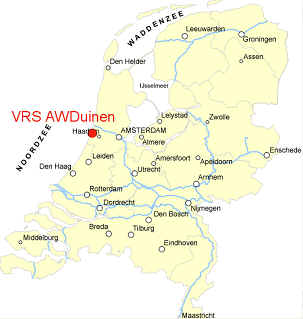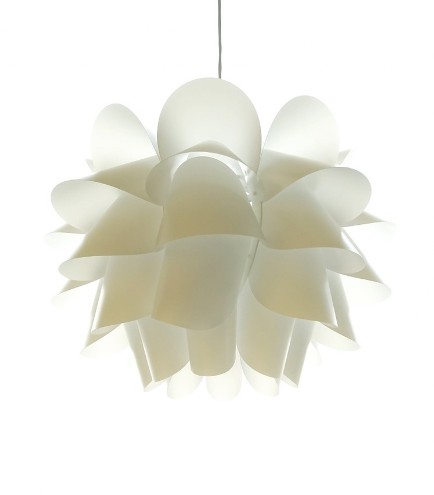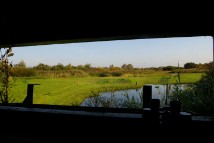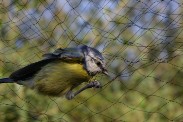About us
Bird Banding Station AWDuinen.
The Foundation Bird Banding Station AWDuinen (short for Amsterdam Watersupply dunes) is located approximately 1,5 kilometre off the Northsea coast, about 1 kilometre south of the town of Zandvoort.
In 1964 the banding station started out as a traditional “Vinkenbaan”, it’s founders being F.Koning, H.Niesen, P.van Spanje and H.Vader.
Over the years the number of people working at the banding station has slightly increased and currently eight banding permittees are active: Koos van Ee, Marcel Schalkwijk, Wil Tamis, Steven Wytema and Henk Jan Koning. There work would be impossible without the help of a group of enthusiastic assistants:Nadia Hijner, Annemieke de Winter, Antje Ehrenburg, Martijn Kosterman, Christien Kemp, Marjolein Verdam, Mariet Ferwerda, Iris Grob, Liesbeth Verlinden, Aad Kortekaas, Jolanda Balkenende, Willem Hageman en Piet Veel.
The following catching techniques are currently being used:
- three clapnets for catching birds like waders, skylarks, pipits, birds of prey and wagtails;
- approximately 350 metres of mistnetting (appr. 2,5 metres high) for catching songbirds;
- two larger mist netting setup of 36 metres length and 5 metres height for use in higher vegetation.
The Dutch organisation that coordinates banding projects in the Netherlands is the Dutch Bird Migration Station in Arnhem, which is part of the Dutch Institute for Ecological Research (Vogeltrekstation Arnhem, NIOO Heteren).
Main scientific goals of the banding work are to monitor reproductivity and survival of breeding birds, as well as to monitor the migration of nightly migrating songbirds. Data regarding sex, age, moult and condition are collected from individual birds.
The banding station participates in nationwide projects like the CES project (Constant Effort Sites), in which breeding birds are trapped according to a standardised method at about 44 sites in the Netherlands simultaneously, to the end to improve our knowledge on bird reproductivity, dispersion and survival. From April until August, during 12 days, local breeding birds are caught yearly with the same fixed setup of mistnets. The setup is being used only once every 12-day period to avoid net avoidance. Changes in vegetation are unavoidable but are tried to be kept at a minimum to facilitate year-to-year comparison.
Starting from the end of July the emphasis of the banding work switches to trapping migrating or temporarily residing songbirds, rails and waders. The seasons ends at the end of November when the abundance of trapped birds are thrushes like Fieldfares and Redwings. During wintertime banding activities at the station are at a minimum, except when snow rushes of Skylarks, Fieldfares and Redwings occur.
We try to occupy the station daily, but since the work is completely performed by volunteers this is never achieved completely; consequently some bad weather days are usually skipped.
Vegetation
The station is located in one of the water infiltration areas of the AW dunes and has the character of a reed marsh in succession. In the surroundings of the station we find a variety of open water, reed, elder, sea buckthorn, beach grass and willow. Therefore the environment offers plenty of food in the form of insects (like many mosquitoes unfortunately for us) and berries and the terrain is probably an important feeding ground for many species of birds in preparation of their migration journey.
The terrain director is "Waternet".





